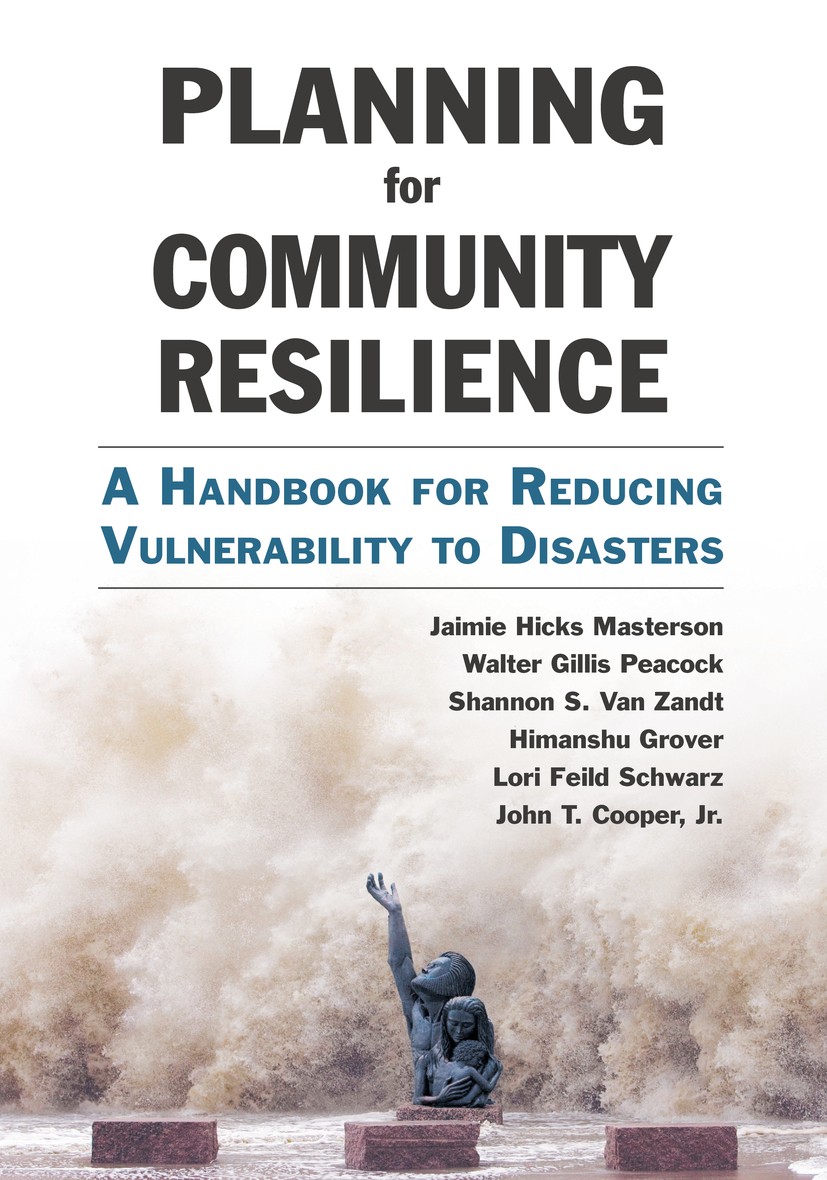| 书目名称 | Planning for Community Resilience | | 副标题 | A Handbook for Reduc | | 编辑 | Jaimie Hicks Masterson,Walter Gillis Peacock,John | | 视频video | http://file.papertrans.cn/749/748396/748396.mp4 | | 概述 | Integrates natural hazards planning with the city and regional planning processes -Will help professionals to understand the land-use tools that can decrease vulnerabilities -Will aid in engaging the | | 图书封面 |  | | 描述 | How can we plan and design stronger communities? From New Orleans to Galveston to the Jersey Shore, communities struck by natural disasters struggle to recover long after the first responders have left. Globally, the average annual number of natural disasters has more than doubled since 1980. These catastrophes are increasing in number as well as in magnitude, causing greater damage as we experience rising sea levels and other effects of climate change. Communities can reduce their vulnerability to disaster by becoming more resilient—to not only bounce back more readily from disasters but to grow stronger, more socially cohesive, and more environmentally responsible. To be truly resilient, disaster preparation and recovery must consider all populations in the community. By bringing together natural hazards planning and community planning to consider vulnerabilities, more resilient and equitable communities are achievable. In Planning for Community Resilience the authors describe an inclusive process for creating disaster-resilient communities. This handbook guides any community through the process of determining their level of hazard exposure, physical vulnerability, and social vul | | 出版日期 | Book 2014Latest edition | | 关键词 | built environment; disaster response; hazard management; urban geography and urbanism | | 版次 | 1 | | doi | https://doi.org/10.5822/978-1-61091-586-1 | | isbn_ebook | 978-1-61091-586-1 | | copyright | J.H. Masterson 2014 |
The information of publication is updating

|
|
 |Archiver|手机版|小黑屋|
派博传思国际
( 京公网安备110108008328)
GMT+8, 2025-11-23 09:37
|Archiver|手机版|小黑屋|
派博传思国际
( 京公网安备110108008328)
GMT+8, 2025-11-23 09:37


